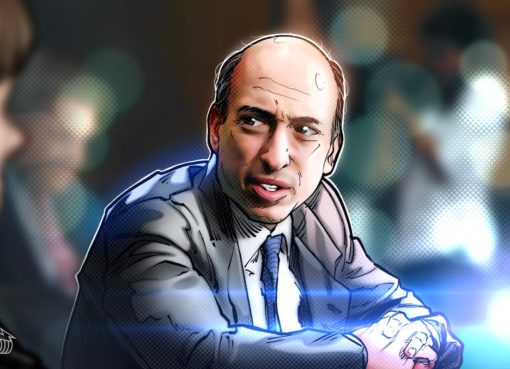Every time the zeal for digital assets from crypto enthusiasts crescendos, so does the derision from crypto critics.
Recently, as bitcoin futures exchange-traded funds made their debuts in the U.S. and the price of the world’s largest cryptocurrency by market value leaped above $65,000, a world-renowned economist and a star bond fund manager took to social media and the airwaves to voice their concerns about digital assets.
This article originally appeared in Crypto for Advisors, CoinDesk’s weekly newsletter defining crypto, digital assets and the future of finance. Sign up here to receive it every Thursday.
In the first case, economist Nassim Nicholas Taleb likened the rise of bitcoin to the 17th-century Dutch tulip bubble. For those unfamiliar with that, in the 1600s, the Dutch went wild for unusual and rare variants of the tulip, paying exorbitant prices for some varieties before the bubble popped and the market collapsed. Taleb is implying the same thing may happen to the cryptocurrency.
In the second, Scott Minerd, chief investment officer at Guggenheim Global, declared most cryptocurrencies as “garbage” and said that most digital tokens will fade away or end disastrously, like the dot-com sector did when the bubble of the 1990s finally burst at the end of the decade.
To me, both of those criticisms seem to amount to the same argument, with two different outcomes: Cryptocurrencies are in a bubble. Taleb believes that a crash is imminent and that tokens won’t be able to recover their value, while Minerd believes that most tokens will end up in the dustbin of history, but that some coins – bitcoin in particular – will survive.
Time will tell whether either pundit is right, but it’s hard for me to imagine a multitrillion dollar asset class and the influential technology behind it just disappearing if and when a valuation bubble pops.
Enthusiasts and skeptics take sides
Since the advent of bitcoin, crypto skeptics and enthusiasts have lined up to voice their opinions about the long-term prospects for the digital assets market.
The enthusiast side includes people like billionaire Galaxy Digital founder Mike Novogratz and the Winklevoss twins, founders of the Gemini Exchange, but those people obviously have skin in the game. More interesting is the enthusiasm that comes from people such as noted financial advisor Ric Edelman and Tesla founder Elon Musk, as they aren’t crypto “natives” and they bring energy and attention to digital assets from other industries.
Meanwhile, skeptics include Berkshire Hathaway’s legendary tandem of Warren Buffet and Charlie Munger, economist Paul Krugman, Dallas Mavericks owner Mark Cuban, as well as financial advisor icons Peter Mallouk and Michael Kitces. And another skeptic, speaking of financial icons, is Carl Icahn.
Even more interesting is the recent string of crypto converts – people who started out as skeptics but have changed their minds on digital assets. These include economic historian Niall Ferguson, journalist Kevin Roose and a host of Wall Street legends such as Ray Dalio, Stanley Druckenmiller and Paul Tudor Jones.
What the skeptics, including Taleb and Minerd, believe is that one, the public zeal for digital assets will at some point drop, and two, that the volatility of assets like bitcoin will help accelerate their undoing.
That may be a myopic viewpoint, because it focuses on the utility of digital assets as investments alone. It’s like looking at a stock market as merely a mechanism for registering public opinion on the names and tickers of the companies themselves, completely agnostic to the underlying earnings, cash flow and growth.
Beyond digital assets as investments alone
Steve Larsen – founder of both PlannerDao, a source of digital assets information and infrastructure for financial advisors, and the Certified Digital Assets Advisor (CDAA) designation – argues that many advisors are missing the point when it comes to viewing and understanding digital assets. Larsen is a former Edward Jones advisor and an accountant who founded the CDAA as a decentralized autonomous organization (DAO). Unlike the CFP Board (Certified Financial Planner Board of Standards) and the Investments and Wealth Institute, which are both central governing bodies that manage certifications, the CDAA is governed by advisors who vote on requirements and policies as a community.
“Digital assets will revolutionize not just investing, but the economy, as well,” said Larsen. “Step one is understanding cryptocurrencies and other digital asset as an asset class and how they fit into a portfolio. Step two, which is coming much faster than most people realize, is that cryptocurrency is also a delivery system that will on some level forever change how we access financial products and services.”
The first place that has come to light is the advent of decentralized savings and payments platforms, and it will spread to investment accounts and the financial and technological infrastructure that advisors rely on to work on behalf of their clients, Larsen said.
Changing technology and public discourse
The first wave of change from blockchain technology has targeted banks, and one of the next waves will target traditional broker-dealers and custodians. Because digital assets are designed to be assets investors can hold themselves, Larsen argues that the underlying technology could one day render broker-dealers and custodians obsolete, replaced by algorithms operating at little or no cost to the advisor or end investor.
“Advice is a product that never goes out of style; it’s a service that’s always needed, but the product distribution system we are traditionally forced to deal with is going away,” he said. “Digital assets will cut out many of the layers of middlemen that it has traditionally taken to invest client money, and that’s who is really going to miss out, not the planner on the front end.”
Until that shift happens, though, the public discourse on cryptocurrencies will continue to be over their utility as an investible asset class, Larsen said, which means we will have to live with the push and pull between skeptics and enthusiasts, bulls and bears.
“There’s a reason we’re all trying to get over and through any intermediate time frame, because that’s what it is going to take before people can clearly see the utility digital assets will bring to their day-to-day lives,” Larsen said.
“It is like the internet. Conceptually, it all made sense, but it didn’t really come together until people saw the difference in their lives. That’s holding digital assets back from the true explosion a lot of us are waiting for, and part of that explosion can’t happen until independent advisors feel like they can bring their clients to crypto in a safe and legal way.”




